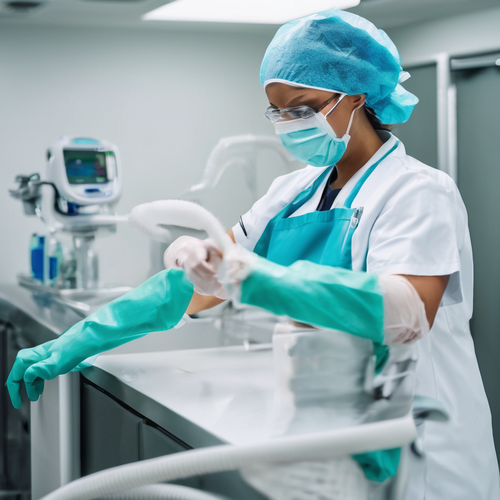Transforming Healthcare: Case Studies in Personalized Cleaning for Hospitals and Clinics
In the sterile halls of hospitals and clinics, cleanliness reigns supreme. Yet, beneath the surface, a revolution is quietly unfolding—one where personalized cleaning services are not just a luxury but a critical need. There’s a mesmerizing irony in a world that fervently promotes health yet often sees cleanliness as a mere afterthought, much like an artist who spills paint on a masterpiece and then shrugs it off as “just color.” 🖌️
The Unseen Heroes of Hygiene
The pandemic brought to light not only the vital importance of health systems but also the sometimes frivolous nature of how we approach their upkeep. Take, for instance, a case study from a bustling metropolitan hospital, where cleaning protocols were revamped to be as personalized as a tailored suit. Here, the sweeping versus the targeted approach highlights a striking antithesis—the former, a broad stroke encompassing all, while the latter zeroes in on specific needs, addressing infection control on a granular level.
One has to wonder: in a realm so dedicated to saving lives, why were cleaning efforts treated like mere footnotes in the grand story of patient care?
Case Study: The Targeted Approach
At St. Catherine’s Hospital, the adoption of a personalized cleaning model saw a 30% reduction in hospital-acquired infections (HAIs) within six months. The initial challenge was daunting; how to craft an approach that addressed the unique demands of various departments—from surgery to maternity—while engaging staff who found the new methods, initially, as delightful as vegetables at a candy convention. 🍬🥦
By employing data analytics, the cleaning teams identified high-touch surfaces and frequent patient interaction zones as the most critical areas needing focus. The irony didn’t escape the staff; cleaning carts became the unsung heroes of the hospital, adorned with tools and products tailored to specific departments, like a mixologist concocting a drink designed to suit individual tastes.
“Cleaning isn’t just about cleanliness; it’s a safeguard for our patients, our heroes in scrubs,” said Laura Kim, the hospital’s Chief Operations Officer. “It’s our invisible armor against infection.”
A Deep Dive into Personalization
Much like a gardener tends to their flowers, personalized cleaning in healthcare is all about cultivating a safe environment. The similarities are uncanny: both require attention to detail, a deep understanding of the unique needs of each “specimen,” and, ironically, a touch of creativity. 🌼
At Maple Leaf Clinic, another success story emerged from the chaos of COVID-19. The clinic had all but forgotten about the previously robust cleaning measures. As patients trickled back to the clinic, so did the dust bunnies and grime. But with a personalized cleaning strategy that included regular assessments by cleaning staff working in tandem with medical teams, the clinic not only revived its atmosphere but also improved patient satisfaction scores drastically.
Strategic Cleaning: The New Normal
Personalized cleaning must go beyond the surface; it involves painstakingly tailored strategies that adapt to the fluctuating environments within hospitals and clinics. Consider the endotoxin found on medical equipment and how it can vary like colors in a sunset—shifting from one moment to the next. The solution? Establishing cleaning teams with expertise specific to their areas of operation. Ironically, while we often equate cleanliness with repetition, in hospitals, it becomes a dynamic process, one where innovation thrives amidst infection control.
In the new cleaning paradigm:
- Checks and Balances: Routine assessments to adapt cleaning protocols as patient needs melt and mold over time.
- Staff Engagement: Involving medical staff in discussions about cleaning protocols to ensure strategies fit their workflows.
- Technology Integration: Using UV-C sanitizing technology and advanced cleaning agents that target specific pathogens, creating a cleaning regimen as intricate as a master chef’s recipe.
A Lesson for All
The transformations taking place in these institutions serve as clear reminders: we cannot afford to treat cleanliness as an afterthought. As healthcare leaders and cleaning professionals demonstrate, personalized cleaning is more than just wiping down surfaces; it’s about crafting environments that are responsive and intelligent. 🌍
Conclusion: Embracing a New Future
As the healthcare landscape evolves, so must our approach to cleaning within it. The case studies from St. Catherine’s Hospital and Maple Leaf Clinic illustrate how a commitment to personalization can yield significant health benefits while feeding the narrative of care and safety. Perhaps the irony lingers—standing at the crossroads of health and hygiene, our boldest step forward lies not in forsaking the art of cleanliness, but in embracing it fully, like a warm embrace that promotes recovery and wellness.
In the world of healthcare, the clean slate is not just a metaphor but an achievable reality—one that promotes healing, trust, and, above all, the vitality of life itself. ✨
